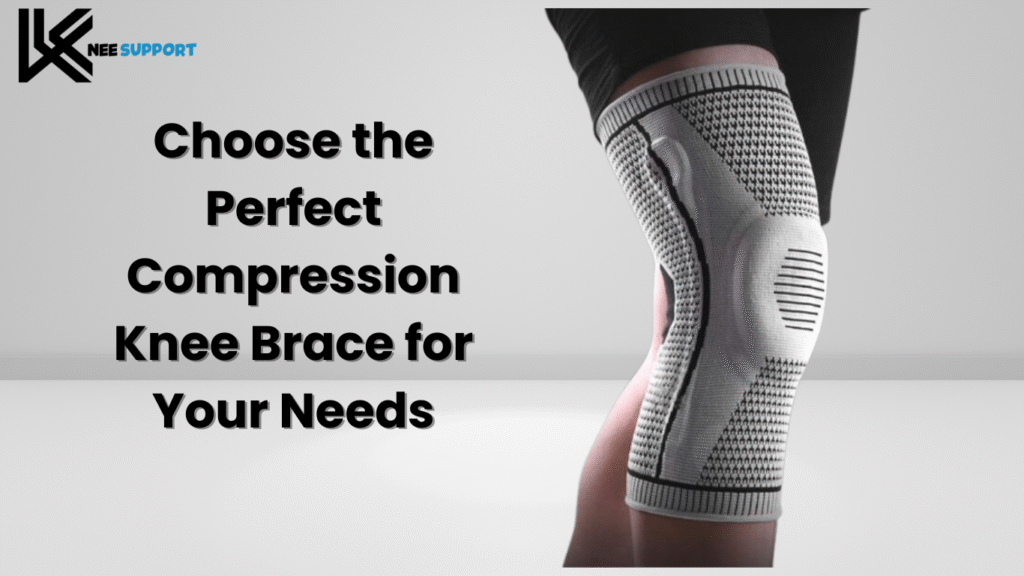
Find out how a compression knee brace reduces pain and aids recovery for active lifestyles and everyday wear and mobility.
A compressive knee support system is an important tool and is generally useful for bracinga knee joint for a person having knee pain or being in the course of a recovery process of his knee. This is an instrument to aid recovery, improve blood circulation, and enhance stability; it’s for athletes and everyday heroes. A knee sleeve can help take pressure off the joint, minimize inflammation, and protect the ligaments while providing support during physical activity. Whether you need a knee brace for the gym or everyday wear, Inspiration for Youth can support injured or arthritic knees so you can play your favorite sports, lift more weights, or just provide the support you need for knee rehabilitation.
What is a Compression Knee Brace?
One type is a compression knee brace, which is a supportive knee hardware that goes around the knee joint. Such braces are typically fabricated of materials such as elastic and neoprene to provide soft tissue compression. A compression knee brace is the best knee brace for compression, and it works by providing moderate compression around the purchase that helps to stabilize a moveable joint. This compression helps decrease swelling and helps with pain relief. A lot of athletes use a compression knee sleeve in training, preventing possible injuries and improving overall performance. But it is not only athletes who benefit from these braces—whether you are experiencing knee pain or recovering post-surgery, you can experience relief and improved mobility.
The structure of a compression knee brace also affects how well it works. Many of the braces are in the form of a knee sleeve that slides over your knee. They may also be adjustable fit braces with straps, used to obtain a closer fit. But whether the look is retro or edgy, the objective is still the same—to offer support and protect the knee joint. With a proper fit, the brace will support you with all-day wear.
How Compression Therapy Works in Knee Braces
What makes compression knee braces so effective is the science behind compression therapy. A compression on the knee also improves blood circulation. This increased circulation is vital for both muscle recovery and overall joint health. Improved blood circulation ensures that oxygen and nutrients reach the region of the lost part and helps it to heal. It essentially aids in injury prevention and recovery.
Furthermore, the soft tissue compression produced by these braces can diminish inflammation. There are several reasons for swelling, including obvious causes such as injury or overuse. Using a compression knee brace, there is less surrounding fluid collected in the knee. The side space provides not only excellent airflow and a feeling of comfort but also ease of movement and use in daily life.
The advantages of compression therapy over a sedentary lifestyle are tremendous. Users regularly have increased range of movement and comfort, allowing them to return to normal activities without concern for pain. Assessment For athletes, having the ability to train without any hindrance is crucial, and a compression knee brace is an indispensable piece of equipment to help achieve that.
Pros of Using Compression Knee Sleeves
The benefits of using a compression knee brace There are so many great benefits that come with wearing a compression knee brace, in case you need joint support! One of the major advantages is pain relief. Millions of people suffer from the aching and pain that knee problems cause. Knee compression braces, when well designed, provide uniform compression and relieve joint pain. The safety the brace brings also motivates people to be fearless when moving and allows for an active lifestyle.
It also helps to reduce swelling, another big added bonus. Swelling may restrict movement and impede the healing process following an injury. A compression knee support helps to reduce any current swelling and attempts to prevent further swelling when you are active. This double-up aspect is crucial for athletes who often strain their knees and require them to perform at their peak.
Compression knee braces also help in rehab. They are a great support to those recovering from injuries or surgery, allowing exercise and muscle toning in the legs. It is important to immobilize the knee to keep any complications from occurring during the recovery process following the operation. It can be one of the best braces designed for the rehab of your knee ligaments, and it can give you positive protection and support for ligaments that haven’t been able to heal properly.
Types of Compression Knee Braces
Compression knee braces come in various styles to serve different purposes. The knee sleeve is by far the most prevalent. This design delivers constant compression and is simple to slide on. It’s perfect for everyday or casual use and can also be used for light sports. This is definitely many people’s go-to style when they just want something quick and easy.
For a more customized fit, support braces are also available. These supports frequently have a strap system that permits people to adjust the compression. It also helps users recovering from surgery or injury, as they can adjust the brace as needed.
And there are athletic knee braces, specially made for sports and high-impact activities. These braces offer firm support and can have an anti-slip design that ensures that they will not move when worn. The Best Right Knee Brace Can Improve Your Sporting Performance for Both Stability and Comfort.
How to Choose the Best Compression Knee Brace
It’s easier said than done: finding the best compression knee brace. One of the initial initiatives is to scrutinize your requirements. Assess if you will need a knee sleeve for everyday movement or in a more braced mode for concentrated support. Additionally, the material of the knee brace is important. Opt for breathable, moisture-wicking materials that keep skin dry and comfortable.
Please ensure the knee brace fits properly when you try it on. Correct fit is important for both pain relief and support. The brace should fit snugly but not too tight. If you feel numbness or tingling, it may be too tight, and you may need to increase the diameter. And for anyone not sure about size, there is also the option to seek the advice of a healthcare professional, which adds peace of mind.
Types of Compression Knee Braces and Misperceptions
While the advantages are clear, there are loads of myths about compression knee braces. Some people think such gadgets are for athletes or for people who are physically active all the time. Nevertheless, compression knee braces can significantly assist individuals who are in pain and recovering from surgery by providing useful knee support. Compression braces aid in the easing of movement for everyday life, whether it be walking or climbing stairs, by each and every one of us.
There is also a myth that use of a compression knee brace would not be subject to physical therapy exercises. By contrast, bracing during rehabilitation can, in fact, facilitate it. It also protects the knee and allows users to engage in different movement therapies without overstressing the joint.
Conclusion:
The Role of Compression Knee Braces in Everyday Life
To culminate, compressive knee braces significantly contribute to joint stability and pain relief in several populations. Whether you are an athlete trying to keep your knees warm and stable or someone who is recovering after a knee injury, a well-convenient brace can aid in recovery and help prevent future injuries. With compression therapy, you will be able to move more easily in your everyday life and find a better quality of life overall.
But with so many options to choose from, it’s important to find the perfect brace. Make sure you select supportive knee gear that is concerned with your lifestyle. Just listen to your body and doctors if you have any concerns at all. Choosing the right compression knee brace can be an important part of keeping your knees healthy and helping you continue to be active and participate in activities of daily living.
